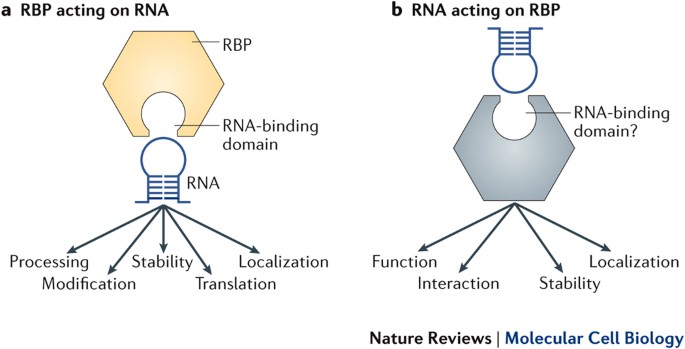Intellau_Celistic
5'3 KHHV Mentalcel
-
- Joined
- Aug 26, 2021
- Posts
- 166,411
Join Date: 2016-02-24 Post Count: 108 | #189895290Saturday, May 28, 2016 10:22 AM CDT "this list is honestly awful Lol" Of-course it is a horrible list. It was made from the biased perspective of an adolescent imbecile. |
| King_Queen Join Date: 2016-02-24 Post Count: 108 | #190035171Sunday, May 29, 2016 8:42 PM CDT It is simply testosterone euphoria. |

| King_Queen Join Date: 2016-02-24 Post Count: 108 | #190037380Sunday, May 29, 2016 9:15 PM CDT Western females are very well known for hypocrisy. Although, only males are the malicious perpetrators, according to liberal morons. |

| King_Queen Join Date: 2016-02-24 Post Count: 108 | #190051657Monday, May 30, 2016 1:21 AM CDT The more accurate question to ask is whether "she" can completely abolish her vanity to avoid being banned. Of-course, the answer is quite obvious. |

| King_Queen Join Date: 2016-02-24 Post Count: 108 | #190120641Monday, May 30, 2016 8:09 PM CDT Generally-speaking, any individual who supports female supremacy is of little value to me. |
{
"is_ranking_enabled": true,
"user_text": "Death means nothing. You're judged by your works, in life and in death. McCain's works will make him a permanent target of ridicule by some.",
"headline": "Michelle Malkin attacks the 'ghost of John McCain' in immigration talk at CPAC",
"url": "https://news.yahoo.com/michelle-malkin-attacks-apos-ghost-230053362.html",
"timestamp": "Sun Mar 03 00:58:57 UTC 2019"
},
Why LARP?Re: itt: your main ancestry
UnsourcedAnon

Join Date: 2016-01-12
Post Count: 563#200647948Friday, October 28, 2016 7:32 PM CDT
White/European Caucasian. >97.99% I am glad to not have bonobo DNA.
Why LARP?
| UnsourcedAnon Join Date: 2016-01-12 Post Count: 563 | #200649858Friday, October 28, 2016 8:22 PM CDT Good. Less Niqqlers trying to integrate into Internet communities made by Whites. |
Re: im losing interest in roblox fast
| ||
Re: Why do most 11-14 year olds act like they are way better?
|
| UnsourcedAnon Join Date: 2016-01-12 Post Count: 563 | #200648644Friday, October 28, 2016 7:53 PM CDT Typical American bonobo. You'd rather sit on ROBLOX playing games made by average IQ White children than contribute positively to society. |
hey send me a pm since you got that feature turned off I cannot thank you enough for the advice on noopept
- Enables RNA binding activity. Predicted to be involved in rRNA processing. Located in extracellular space. [provided by Alliance of Genome Resources, Apr 2022]
RNA-binding proteins (RBPs) are typically thought of as proteins that bind RNA through one or multiple globular RNA-binding domains (RBDs) and change the fate or function of the bound RNAs. Several hundred such RBPs have been discovered and investigated over the years. Recent proteome-wide studies have more than doubled the number of proteins implicated in RNA binding and uncovered hundreds of additional RBPs lacking conventional RBDs. In this Review, we discuss these new RBPs and the emerging understanding of their unexpected modes of RNA binding, which can be mediated by intrinsically disordered regions, protein–protein interaction interfaces and enzymatic cores, among others. We also discuss the RNA targets and molecular and cellular functions of the new RBPs, as well as the possibility that some RBPs may be regulated by RNA rather than regulate RNA.

To maintain cellular homeostasis, all cells must continually synthesize new proteins. Ribosomes (polyribosomes) are specialized complexes composed of nucleic acids and proteins that are responsible for mediating all protein synthesis. Specialized nucleic acids, rRNA and tRNA molecules, are essential for ribosomes to translate mRNA into proteins (Yang, 1996; Fromont-Racine et al., 2003; Han et al., 2003; Tschochner and Hurt, 2003; Granneman and Baserga, 2004)
In this short review, we highlight recent findings in the emerging field of epitranscriptomic mechanisms and discuss their potential role in neural plasticity, learning and memory. These include the influence of RNA modifications on activity-induced RNA structure states, RNA editing and RNA localization, and how qualitative state changes in RNA increase the functional diversity and information-carrying capacity of RNA molecules. We predict that RNA modifications may be just as important for synaptic plasticity and memory as quantitative changes in transcript and protein abundance, but with the added advantage of not being required to signal back to the nucleus, and therefore better suited to be coordinated with the temporal dynamics of learning.
The process of learning, and the associated neural plasticity that leads to memory formation, requires the ability to detect and rapidly respond to dynamic changes in the environment. At the level of individual neurons, these responses occur on a timescale that is faster than activity-induced transcription via the coordinated, activity-induced switching of internal molecular states and cellular metabolism. In recent years, our understanding of experience-dependent gene regulation and neuronal adaptation has advanced significantly with the recognition that the structure state of RNA can provide the modifiable context in which this can occur. Structurally labile RNA elements are able to react to changes in ion concentration and metabolite flux, which can lead to altered RBP and RNA-RNA interactions within the cell (Mortimer et al., 2014). For example, a stem-loop structure in the 3′UTR of brain-derived neurotrophic factor (BDNF) mRNA is structurally responsive to calcium influx, thereby stabilizing this transcript in response to neuronal activity (Fukuchi & Tsuda, 2010, Vanevski & Xu, 2015). This structure state also promotes the interaction of BDNF mRNA with the RNA binding protein HuD, which has a direct impact on translation of BDNF (Allen et al., 2013, Vanevski & Xu, 2015). Further, an important role for the G-quadruplex RNA structures, which are non-canonical RNA structures organized in stacks of tetrads or G-quartets, in which four guanines are assembled in a planar arrangement by Hoogsteen hydrogen bonding. G-quadruplex RNA has been shown to be critically involved in mediating the localization of CamKIIα and PSD-95 to neurites, which are essential for synaptic plasticity (Subramian et al, 2011).
Importantly, the dynamic switching of RNA structure states in response to changes in the cellular environment can be influenced by RNA modification. An interesting example of structural lability conferred by RNA modification is the brain-enriched lncRNA MALAT1, which influences synaptogenesis (Bernard et al., 2010) and is found in nuclear paraspeckles within hippocampal neurons, implying a key role in alternative splicing. When MALAT1 accumulates m6A modifications, its interaction with the RBP heterogeneous nuclear ribonucleoprotein C (HNRNPC) is enhanced, which then promotes its accumulation in paraspeckles (Liu et al., 2015, Zhou et al., 2016). We found that a significant number of lncRNAs, including MALAT1, are dynamically expressed in the adult brain in response to fear-related learning (Spadaro et al., 2015) and that the majority of these lncRNAs contain motifs for m6A and Ψ. The purpose of these modifications on neuronal lncRNAs remains to be determined; direct induction of an experience-dependent structure state change could promote the downstream influence of lncRNAs on RNA-directed epigenetic regulation in learning and memory, and this hypothesis warrants further investigation.
| AnonyAnonymous Join Date: 2013-06-23 Post Count: 6332 | #146357147Friday, September 19, 2014 3:27 AM CDT "theres no vaccines to it, and vaccines are for before you get it" It's possible to infuse someone with an "Ebola" infection with compatible antibodies from a surviving donor to help their immune system annihilate the virus and increase their chances of survival; The over-all usability of Anti-Ebola "Immunoglobulin" is still being researched, however. |
| AnonyAnonymous Join Date: 2013-06-23 Post Count: 6332 | #145310479Thursday, September 04, 2014 4:54 AM CDT Actually, "Human Immunodeficiency Virus" is capable of hiding in the brain. |
| AnonyAnonymous Join Date: 2013-06-23 Post Count: 6332 | #149515859Monday, November 10, 2014 5:41 AM CST In theory, any virus capable of infecting certain neurons and interfering/blocking the activity of axons in the cell can result in potential "Dumbness". |
| AnonyAnonymous Join Date: 2013-06-23 Post Count: 6332 | #151488460Thursday, December 11, 2014 12:08 AM CST "why would I enjoy something that causes human suffering to anyone that has it?" It simply depends on which aspect you're taking into recognition. Analysis of the effects of long-term infection with the pathogen is highly beneficial for interpretation of the various mechanisms utilized by the virus to cause eventual immunodeficiency. |
| AnonyAnonymous Join Date: 2013-06-23 Post Count: 6332 | #151487948Wednesday, December 10, 2014 11:55 PM CST Ah yes, interviewing topics can be very entertaining. 'Severe CD4+-Cell deficiency due to chronic, untreated infection with the "Human-Immunodeficiency-Virus".' |
| AnonyAnonymous Join Date: 2013-06-23 Post Count: 6332 | #151542060Friday, December 12, 2014 5:06 AM CST Ah yes, "Scare-ware" is often bothersome to remove. "Virut"/"Sality" is a particularly interesting "Computer-Virus". |
Re: giving opinions 4 free
| ||
Re: A NEW CHEMICAL THAT CURES EBOLA
|
| AnonyAnonymous Join Date: 2013-06-23 Post Count: 6332 | #152584896Saturday, December 27, 2014 6:24 PM CST Ah, there's many variants of "Human-Papilloma-Virus". Are you certain that it isn't simply a lesion caused by a strain of "HSV"? |
| AnonyAnonymous Join Date: 2013-06-23 Post Count: 6332 | #149378575Saturday, November 08, 2014 6:11 AM CST "What types of extensive therapy?" It would really depend on the auto-immune disease and the extent of the effects. The typical course would be perhaps "Corticosteroid" therapy to suppress the inflammatory response against the cells involved. |
| AnonyAnonymous Join Date: 2013-06-23 Post Count: 6332 | #150979973Tuesday, December 02, 2014 5:45 PM CST Auto-Immune disorders and pathogenic drug-resistance. |
| AnonyAnonymous Join Date: 2013-06-23 Post Count: 6332 | #151654827Saturday, December 13, 2014 10:47 PM CST Ah yes, It could be a relatively simple infection with "Adenovirus"/"Rhinovirus" and should gradually improve as your Immune-System brings the infection under control. Although, I'd suggest seeking medical examination if it worsens further. |
| AnonyAnonymous Join Date: 2013-06-23 Post Count: 6332 | #151435929Tuesday, December 09, 2014 10:03 PM CST "have you been doing "it" and if so go to the doctors" Kaposi's-Sarcoma usually appears once the CD4+ cell count has been significantly depleted due to chronic HIV infection. |
| UnsourcedAnon Join Date: 2016-01-12 Post Count: 563 | #184078127Sunday, February 21, 2016 10:21 AM CST The range and capabilities of EBOV are easily restrained by its own genetic components. Virology in itself is greatly inferior to bacteriology in terms of development. Nonetheless, we have plenty of "viable" mechanisms to reduce the propagation of lethal pathogens. It is merely a matter of revising them accordingly. |
| AnonyAnonymous Join Date: 2013-06-23 Post Count: 6332 | #151376304Monday, December 08, 2014 9:17 PM CST There's a significant quantity of research being performed simply to understand the mutative mechanisms utilized by common pathogens. Weaponizing "Ebolavirus" would require a significant amount of biological analysis and modification to ensure that the pathogen itself is capable of infecting a large amount of individuals within a short duration of time without eliminating all of the reservoirs or creating a crucial weakness in the pathogen's RNA structure. Additionally, there's plenty of other pathogens that have been thought of as potential biological weapons for decades, such as "Francisella Tularensis". |
The Dragon Ball series.
Dragon Ball
View attachment 588479
Dragon Ball Z
View attachment 588480
Dragon Ball Super
View attachment 588482
Dragon Ball GT
View attachment 588485
Dragon Ball Heroes
View attachment 588488
View attachment 588483
Dragon Ball Xenoverse
View attachment 588487
Yes indeed. I created many story-lines connecting Xenoverse and Dragon Ball Heroes, years ago.
Years ago, I wrote some adaptations for many Dragon Ball games and mangas. My storyline merges GT, Xenoverse and Dragon Ball Heroes together with the movies.





